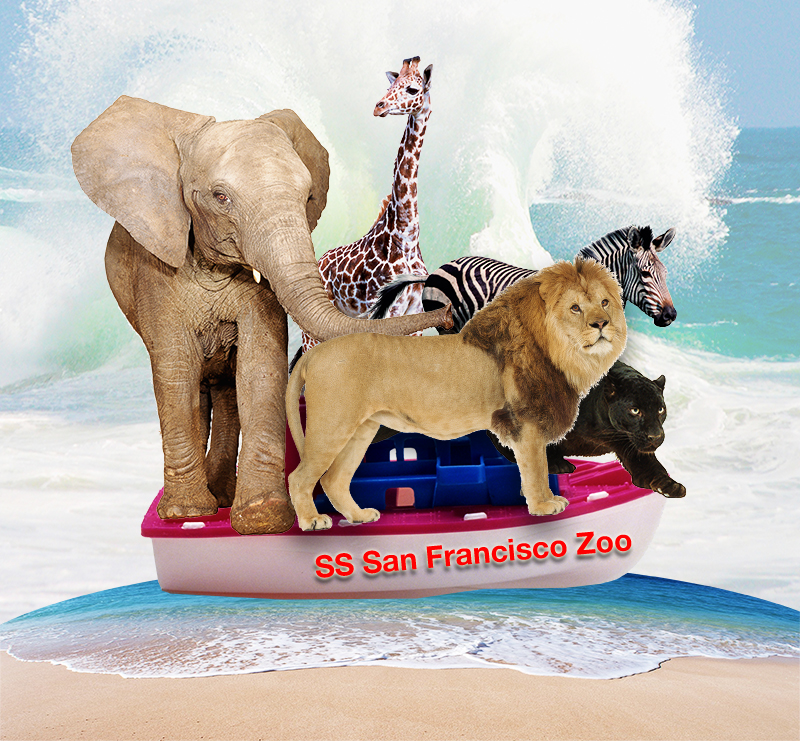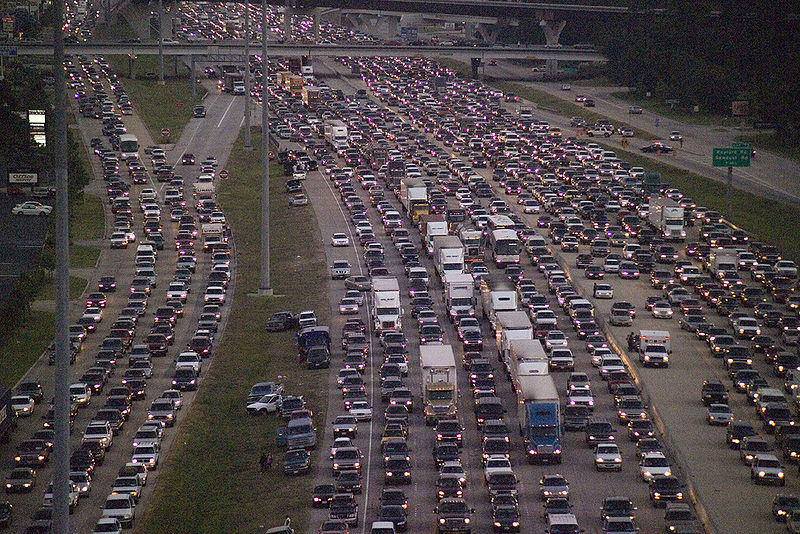These are three necessary components of any product design:
- Knowledge: the background information that forms the foundation of product design
- Context: the ecosystem in which the product will be used
- Expectation: the alignment of goals between product creators and the users for which it was designed
A failure to fully understand any of the above variables results in errors that propagate throughout the product system.
But what if the product is disaster preparedness? Consider the design of an evacuation plan ahead of a disaster. You would need to understand the what kinds of damage the disaster is capable of wrecking; the probabilities for each outcome; the people and the ecosystem in which the disaster will occur; and expectations of all the participants in the evacuation plans.
Tsunami and The Zoo
A few years ago, I was teaching a fifth grade science class where we were discussing the possible damage from a tsunami in San Francisco (we just visited the Bay Model). The problem I posed to the students was to design a reasonable evacuation plan for The San Francisco Zoo animals. The Zoo lies on the tsunami flood plane, and as far as we knew there was no plan for what to do with the animals in case of a real emergency.
Each elementary class in San Francisco visits our zoo about once a year and the kids form strong attachment to the animals. It was unthinkable to them to leave the animals in their cages to drown. But it was also not an option to evacuate animals instead of the people of San Francisco. So what to do?
The students decided that birds could be allowed out of their cages—they had the ability to escape to the trees by flying. Smaller animals can also be set free to fend for themselves—at least it gave them a chance to survive—or be allowed to be taken away by zoo staff and volunteers. San Francisco is expected to get a few hours of warning in a case of a tsunami, unlike Japan, so these were reasonable accommodations.
The biggest problem came when we started to discuss big and dangerous animals: what can we do with tigers? Lions? Polar bears? They couldn’t be set free. If the emergency passed and there was no water damage, then these predators would wondering the San Francisco’s neighborhoods. If there was damage, these animals (some would survive) would pose a risk to the rescuers. The students came up with lively stories of firemen battling alligators while saving grandmothers and babies off roof tops. It made for wonderful stories (gripping and suspenseful). But in practice, the students agreed that setting those animals loose was not a great idea.
The solution these children came up with was full of empathy and wisdom. They wanted all of the dangerous animals, the ones that couldn’t be set free, put to sleep. They didn’t want them dead, just asleep. If the disaster happened, those animals wouldn’t suffer, the students reasoned. And if it was a false alarm, the animals would wake up a few days later and never know they were in danger. It was a compassionate solution.
Do we have such solutions for people in danger zones? As the resent Japan’s crisis shows, we don’t. Even in a country as prepared for an earthquake and a tsunami as Japan, people are still left to their own devices out in the cold, without food or water, with little means to communicate to the outside world or to get to a safer location…a full week post the event.
Designing for Evacuation
The necessary components of evacuation after disaster follow the same three design rules:
- Knowledge: a plan of action that is known and understood by the population
- Context: a plan that can be executed given the particular disaster ecosystem
- Expectation: the alignment of government and population goals for the evacuation
The image below shows the congestion on the roads after the order for a mandatory evacuation of Houston was given due to hurricane Rita. This was just a few weeks following the disastrous evacuation of New Orleans prior to hurricane Katrina. What happened during hurricane Katrina was so bad that people heeded the evacuation order and hit the roads all at once. More people ended up dying due to the evacuation, while sitting in traffic, than from the storm!
People knew and understood what the government wanted them to do, but in a context of that disaster it was inappropriate. The general evacuation order clogged the roads and made it impassible for people in a low-lying areas—the ones in greatest danger from flood—to get out. And there was no plan for reversing the movement of traffic on the highways—no one did an assessment of traffic flow in a case when several millions of people try to leave Houston all at once.
How do you evacuate millions of people when the roads are impassible? When there’s a treat of radiation? And when the people have to be taken out one ambulance at a time? This was the problem at a Watanabe Hospital, inconveniently located within the mandatory evacuation radius of the damaged nuclear plants in Fukushima, Japan. It’s one thing to give the order to evacuate, but what if it is impossible to do so?
Below is a scene from Kesennuma evacuation center. With many medical records gone, it is hard to know what medications have to be administered. And some patients might not be able to communicate their medical needs (either due to poor cognitive function or a simple lack of medical knowledge—can we name all of the medications and dosage for all of the members of our family?).
When Knowledge, Context, & Expectation are not Designed
During the Three Mile Island evacuation after the nuclear reactor accident, Dauphin County planned to move its citizens over the Susquehanna River from East to West. Cumberland County had a plan to move its population West to East over the same bridge, forcing a quarter of a million people to push over each other during a disaster. The ecosystem—the context of the evacuation—was too local. Each county was only worried about their own people and considered their plans in isolation from the rest of the region in which disaster was likely to occur.
Counties often contract with the same low cost providers to deliver services during an emergency. For example, the same ambulance service was contracted with several counties in Louisiana to evacuate hospitals and assisted living facilities during a hurricane (as discovered by Brian Wolshon, the director of the Gulf Coast Center for Evacuation and Transportation Resiliency. Again, the context of the evacuation design was too narrow. Each county could satisfy the mandated safety regulations with a signed contract and still have a meaningless evacuation plan.
At Fukushima Daiichi Nuclear Plant, the designers were so confident in the power of the seawalls to hold off a tsunami, that they installed all electrical and power supplies in the basement. And, as we all learn on March 11th, all of them quickly flooded and were heavily damaged causing a serious accident at 4 out of the 6 nuclear plants. Here, background knowledge was a problem—the plants were only designed to withstand 7.0 earthquake. The designers didn’t design for the earthquake and the resulting tsunami that actually occurred.
Because the Japan’s government have been less than candid with its population about the extent of the problem, there’s now a “credibility gap”—people don’t trust what they are hearing from the authorities. This creates a gap in expectations and yet another possibility for a crisis.
Like the firth-graders careful exploration of the Zoo problem, designers working on crisis-resolution products need to consider carefully all of the background information, the context of the problem, and the expectations of the actors involved.



